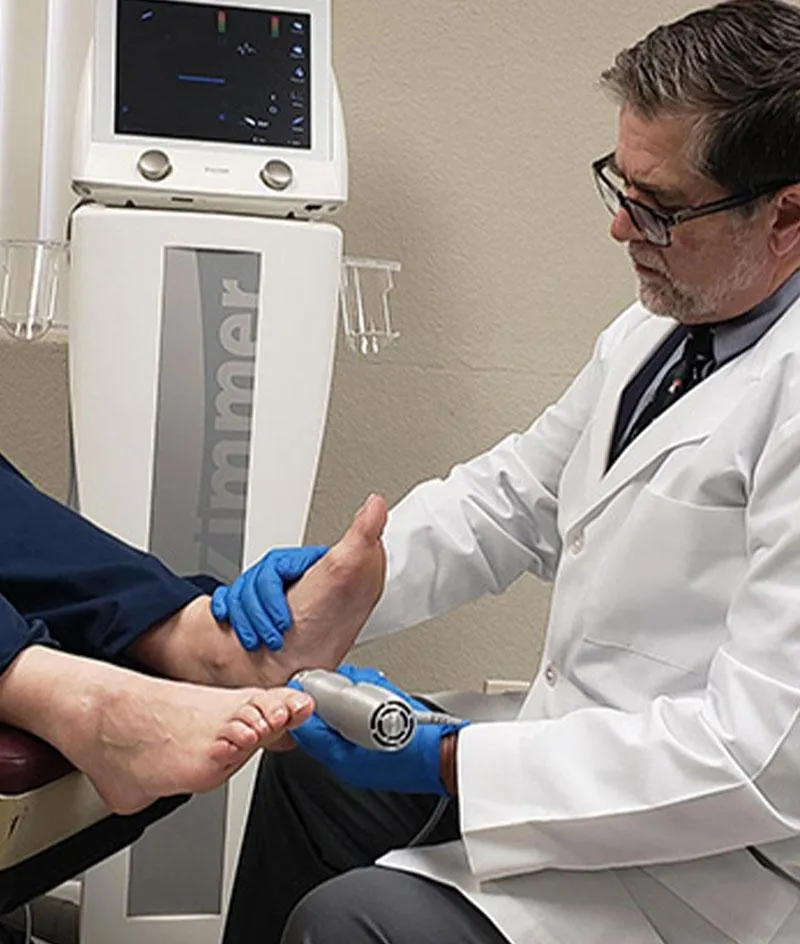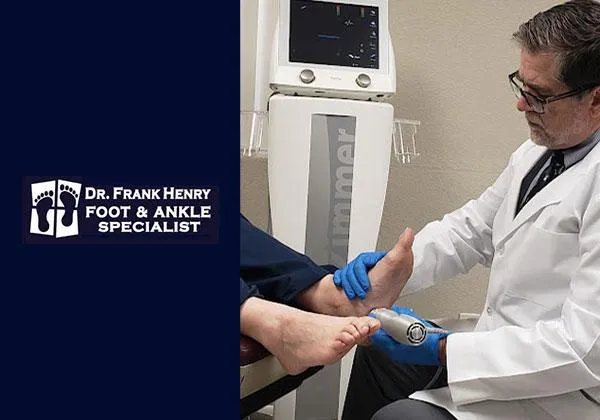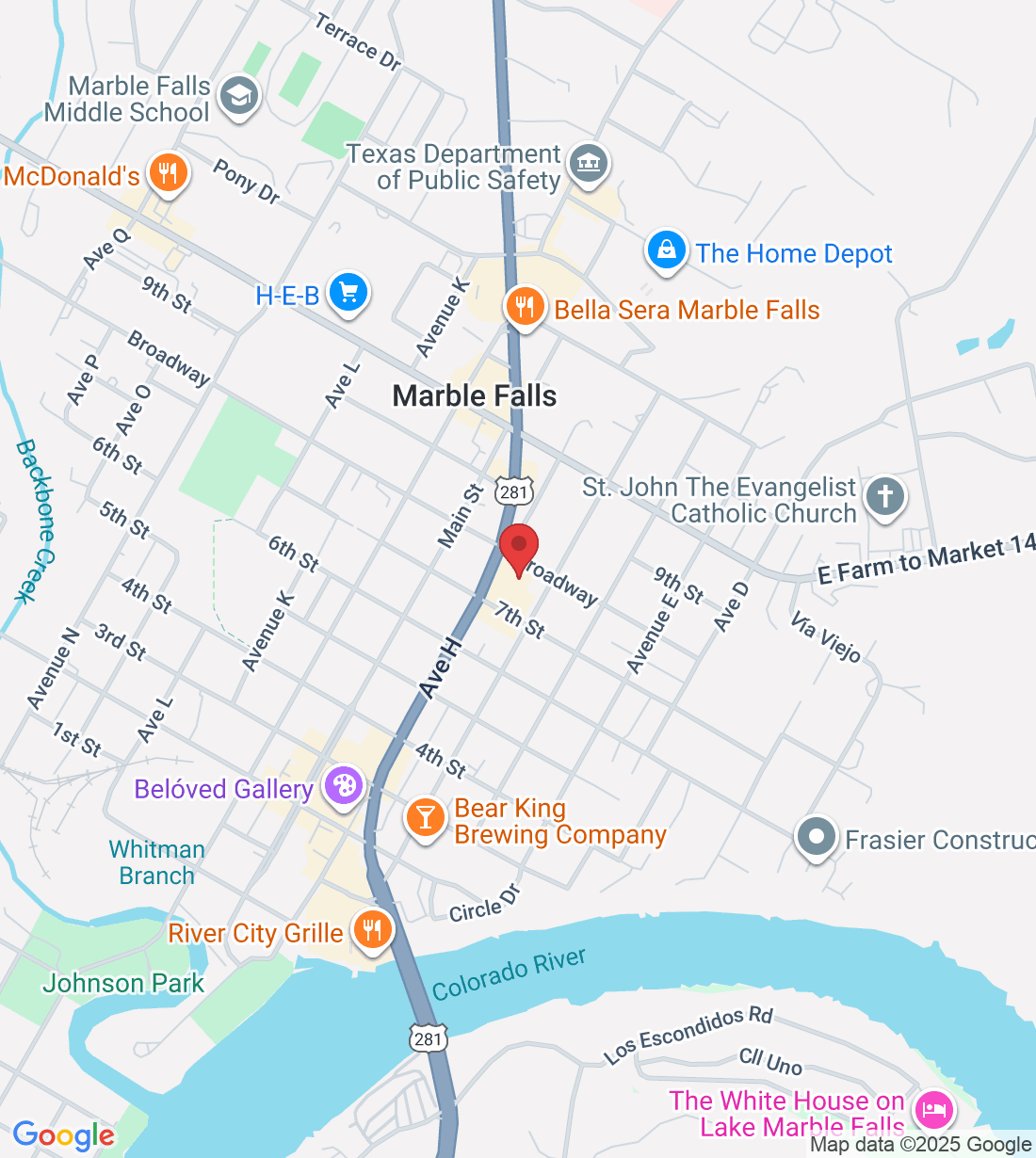
Heel Spurs
Soothe Your Heel Spurs: Discover Our Proven Treatments Today
Signs that you may have a heel spur include pain felt in the heel region, swelling at the front of the heel, and inflammation. If the affected area also feels warm to the touch, you may be experiencing the symptoms of a heel spur.
Heel spurs are extremely uncomfortable and can often lead to a great deal of pain if left untreated. They may develop due to excess body weight, complications with arthritis, wearing poorly fitted shoes, and bruising of the heel.



4 Signs You May Be Developing a Heel Spur
Heel spurs, a common source of foot discomfort, can disrupt your daily activities and mobility. Understanding the signs and symptoms of a heel spur is the first step toward effective management and relief. Let's dig deep into the telltale indicators of heel spurs, helping you recognize when it's time to seek professional guidance and explore treatment options.
Pain in the Heel Region: Heel spurs often manifest as persistent, localized pain in the heel. This discomfort is typically most acute when bearing weight on the affected foot, such as when walking or standing. The pain can range from mild to severe and may interfere with daily activities.
Swelling at the Front of the Heel: Swelling, particularly noticeable at the front of the heel, is a common symptom of heel spurs. This swelling can contribute to the overall discomfort and may be accompanied by redness or tenderness.
Inflammation in the Affected Area: Heel spur symptoms often include inflammation in the surrounding tissues. This inflammation can exacerbate the pain and discomfort experienced in the heel region. It may cause a sensation of warmth and contribute to the overall discomfort.
Sensitivity to Touch: In some cases, the area around the heel may become extremely sensitive to touch and pressure. Even gentle contact with the affected area can elicit pain and discomfort.

Got a Question?
Ask Dr Frank Henry, DPM - Marble Falls and his team of experts

What Exactly Causes Heel Spurs?
Heel spurs, also known as calcaneal spurs, are a common foot condition characterized by a bony outgrowth on the underside of the heel bone. These spurs are primarily caused by persistent strain and stress on the ligaments and soft tissues of the foot, particularly the plantar fascia—a band of connective tissue that runs along the sole of the foot. Over time, this repetitive stress can lead to the development of calcium deposits, or spurs, at the point where the plantar fascia attaches to the heel bone.
Several risk factors can increase the likelihood of developing heel spurs which include:
Excess Body Weight: Carrying excess body weight can increase the risk of developing heel spurs. The additional pressure placed on the feet when bearing weight can lead to the formation of calcium deposits in the heel area.
Arthritis Complications: Complications related to arthritis, especially conditions like osteoarthritis or rheumatoid arthritis, may elevate the likelihood of developing heel spurs. Inflammatory processes associated with these conditions can contribute to the formation of calcium deposits in the heel.
Improper Footwear: Wearing poorly fitted shoes, particularly those lacking adequate arch support and cushioning, is a potential cause of heel spurs. Inadequate footwear can increase stress on the heel, leading to the development of calcium deposits over time.
Trauma or Bruising: Direct trauma or repeated bruising to the heel area can be a contributing factor in the formation of heel spurs. Such injuries may lead to the calcification of soft tissues in the heel.

Characteristics of Heel Spurs
Heel spurs, while often hidden beneath the surface, can significantly impact your foot health and overall well-being. Understanding their characteristics is key to identifying and addressing this common foot condition. In this exploration, we delve into the distinct features and attributes of heel spurs, shedding light on what makes them unique. Whether you're seeking to confirm a diagnosis or simply curious about the nature of heel spurs, this discussion will provide valuable insights into their defining characteristics and their impact on your daily life.
Bony-Like Growth: Heel spurs are characterized by the presence of a bony-like growth in the heel region. These growths typically extend from the heel bone towards the arch of the foot.
Calcium Deposits: The formation of heel spurs is associated with the deposition of calcium in the soft tissues between the heel bone and the foot arch. Over time, these deposits can become more prominent.
Visibility: While heel spurs can grow up to half an inch in length, they are usually not visible from the outside. They are located deep within the foot and are typically identified through diagnostic imaging techniques.
Exacerbation of Discomfort: As heel spurs grow, they can exacerbate the discomfort and pain experienced in the heel region. This highlights the significance of early detection and prompt treatment.
If you suspect a heel spur or are experiencing persistent heel pain, it is advisable to seek professional help. A consultation with a podiatrist or foot specialist can provide a proper diagnosis and tailored treatment recommendations.
In summary, heel spurs are characterized by pain, swelling, inflammation, and sensitivity in the heel region. They can be caused by factors such as excess body weight, arthritis complications, improper footwear, and foot trauma. Heel spurs are bony-like growths resulting from calcium deposits and may not be visible externally. Seeking the guidance of a healthcare professional for early diagnosis and appropriate treatment is essential to manage the discomfort and prevent further complications associated with heel spurs.

6 Reasons To Choose Dr. Frank Henry's Office in Marble Falls
Dr. Frank Henry is a Board Certified Podiatrist: Dr Frank Henry in Marble Falls boasts a highly qualified and experienced team who are dedicated to providing top-notch foot and ankle care. Their expertise ensures that patients receive accurate diagnoses and personalized treatment plans tailored to their specific needs.
Comprehensive range of services: Whether it's treating common foot conditions like bunions, ingrown toenails, or plantar fasciitis, or addressing more complex issues such as sports injuries or diabetic foot care. Our office offers a comprehensive range of services. Patients can trust that all their foot and ankle concerns will be addressed under one roof.
State-of-the-art facilities and technology: Dr. Frank Henry is committed to staying at the forefront of podiatry care by investing in state-of-the-art facilities and the latest technology. This allows for more accurate assessments, advanced treatment options, and enhanced patient outcomes.
Patient-centered approach: Patients are the top priority with Dr. Frank Henry . The team believes in a patient-centered approach, where they listen attentively to the concerns and goals of each individual. This ensures that the treatment plan aligns with the patient's lifestyle and preferences, leading to better compliance and results.
Holistic and preventive care: Beyond just treating existing conditions, Dr. Henry emphasizes the importance of holistic and preventive care. He educates patients on proper foot care techniques and lifestyle adjustments to minimize the risk of future foot problems, promoting long-term foot health and overall well-being.
Positive patient reviews and testimonials: The reputation of Dr. Henry speaks for itself through the positive feedback and testimonials from satisfied patients. Many individuals have shared their success stories and experiences, highlighting the clinic's commitment to excellence and patient satisfaction.
From Consultation to Treatment
What to Expect at Your First Podiatry Visit
We're excited to see you at your appointment! We want to make sure you feel comfortable and well-informed, so don't hesitate to ask us any questions about our treatments, our office, or even our payment options. Our goal is to help you get back to living your life free of pain, so let's work together to make that happen!
Discuss your foot health goals
Provide x-rays if required
Complete foot examination
Discover your options
Start a custom treatment plan

Have Questions? Request a Call Back and Speak With Our Team!

Fill in the form to request a Call From Our Team
One of our team members will call you for FREE and answer any questions or concerns you may have about your aches and pains.




